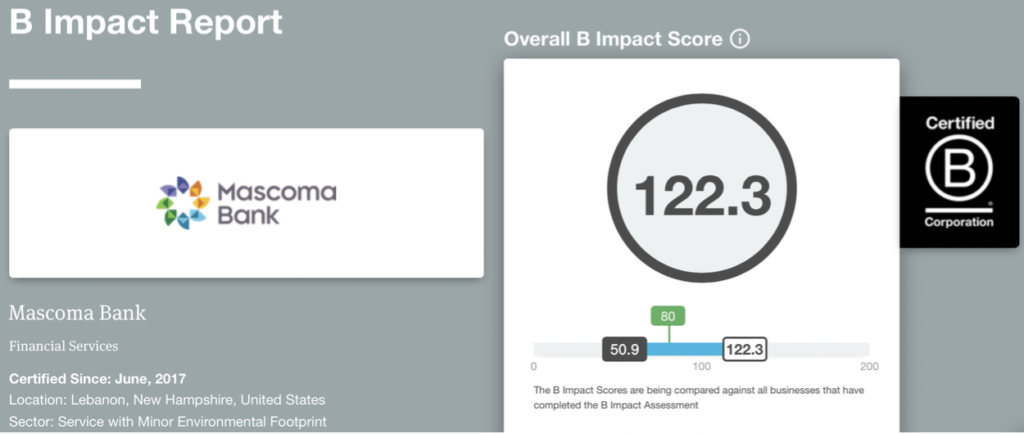Businesses should pay a Living Wage, but You Picked On the Wrong Bank, Frank
Frank, when you read this, forgive me for including your name in the title. It rhymed, I couldn’t resist 😉
One thing I am very much in agreement with related to Ernie and Frank’s “Affordable Housing for the Workforce” string of posts found on the Norwich List Serve two weeks ago (also pasted at the very bottom of this note) is this:
Businesses should Pay a Living Wage
As FDR said 85 years ago:
“No business which depends for existence on paying less than living wages to its workers has any right to continue in this country. By living wages, I mean more than a bare subsistence level — I mean the wages of a decent living.” (1933)
Some businesses have been hiding for decades behind the legal right to pay less than a livable wage… otherwise known as minimum wage. They celebrate corporate and executive success while most of their people are struggling and failing.
In Vermont, measurable progress is being made towards closing the gap between the state minimum (currently $10.50 per hour and likely to rise 1/1/19) and FDR’s definition of a livable wage. A mile away in New Hampshire? Not so much. They remain at $7.25 per hour, which is also the national minimum wage.
Many ask, how much is a livable wage? The best tool I have found for determining livable wages is the MIT Living Wage Calculator. In Norwich (Windsor County), a living wage for a full-time (2080 hours) single adult is approximately $12.28 per hour. A family of 4 with both parents working requires each parent to earn just over $16 per hour. Whenever one adult isn’t working or there is only a single parent, things get very difficult, quickly climbing into the $20-30 per hour range. The link is seen here: http://livingwage.mit.edu/counties/50027. Across the river in Grafton County (NH) it’s actually slightly cheaper: http://livingwage.mit.edu/counties/33009.
But what about the example used by Mr. Manasek of locally-owned and operated Mascoma Bank not doing right for its workforce versus the nameless “Manhattan banks” who “pay enough”? In my mind, nothing could be further from the truth. The big banks, as I’ll call those NYC banks, have paid their tellers and other hourly workers less than the average worker at my simple fast-food shop Boloco for as long as I can remember. They have too often robbed and pillaged customers (sometimes legally, sometimes not) and been bailed out by the government all the while making sure that when profits are made – massive profits – they are distributed to the few.
Mascoma Bank, on the other hand, became a Certified B Corporation in 2017– something few small or large banks in this country could ever qualify for. If you want to look under the hood at Mascoma as seen from a stringent 3rd party, B Lab, simply click this link: https://bcorporation.net/directory/mascoma-bank. This year alone they have been recognized as being “Best for the World” of all 2,000+ B-Corporations, but also specifically in the categories of Workers and Governance. And specifically related to the post, Mascoma does pay above the MIT livable wage calculator even for starting positions with zero experience.

Is Mascoma perfect? Of course not. Do they have many challenges related to employee satisfaction at work and at home that could be improved? As with all conscientious businesses, it’s a never-ending conversation.
To compare Mascoma’s business practices to the “Walmart model”, however, is misleading and dead wrong.
Many Mascoma employees and their families live in our town. They are our friends and neighbors. Other local banks do good work, too… but since Mascoma was cited, I chose to focus on what they do right.
Wrong bank, Frank. (Again, I wouldn’t have used your name, but it rhymed, and I know you can handle it 😉
 Incidentally, for those of you who haven’t read Frank’s thriller spy novels, “Breaking Cover” is one I read earlier this year with thoughtful descriptions of our beloved Norwich, its uniqueness, its businesses, and even some of its well-known personalities scattered throughout a creative and suspenseful plot. You can order his books at the Norwich Book Store or here on Amazon if you aren’t in town.
Incidentally, for those of you who haven’t read Frank’s thriller spy novels, “Breaking Cover” is one I read earlier this year with thoughtful descriptions of our beloved Norwich, its uniqueness, its businesses, and even some of its well-known personalities scattered throughout a creative and suspenseful plot. You can order his books at the Norwich Book Store or here on Amazon if you aren’t in town.
PS: Workforce… In a related post on the List Serve that week, Ernie Ciccotelli talks about “derogatory”, “elitist-approved euphemisms” such as the word “workforce”, and I’m still trying to find anything that supports that theory. I’m totally open to that being true, but I just can’t find any evidence of it. And since I do use the term at times, I want to know.
Frank says in response “Ernie, thank you for this insight. The term “workforce” does seem to have a 19-century quality about it.”. As far as I can tell, it was first used in 1931. The Merriam-Webster dictionary defines workforce as:
1: the workers engaged in a specific activity or enterprise – the factory’s workforce
2: the number of workers potentially assignable for any purpose – the nation’s workforce
I did look up derogatory words for workforce, and there are some doozies. But workforce, itself, wasn’t one of them. Perhaps that will change, but I’m not sure that’s the battle that really matters at this stage. As for those who are undercompensated, underpaid, low-income, etc., I think I’ve made it clear how I feel about that. And subsidized, affordable housing might be used to describe housing specifically for this group. But workforce housing is more general, not necessarily tied to low income but really most incomes, perhaps other than those in the highest income tiers.
Disclosure: I’m not a personal customer of Mascoma Bank and was even turned down for a business loan by their lending department a few years ago. But I do plan to shift some business from Bank of America their way in the near future for some of my business accounts for the reasons stated above.
————-
Original Post:
Affordable Housing for the Workforce
From: “office@fmanasek.com” <office@fmanasek.com>
Date: Tue, 7 Aug 2018 09:35:27 -0400
Ernie, thank you for this insight. The term “workforce” does seem to have a 19-century quality about it.
But let’s look at it through the lens of the present time, present place. At least two public meetings in Norwich, the president of the Mascoma Bank argued for affordable housing because of the needs of the business community. As I recall, he explained the difficulty his bank had in hiring new people because house prices were so high. I have heard this argument from other employers, so it isn’t just the Mascoma Bank, but because it’s public record I’ll just use the MB as an example.
New York City housing prices are higher than Upper Valley’s. Banks in Manhattan hire workers all the time. Most of these workers, like many employed people cannot afford Manhattan apartments. However, their pay is more than adequate to own houses in the Boroughs. Yes, it requires a commute, but commuting is not only for the low-wage people. Much of Scarsdale and Larchmont work in Manhattan and these folks have upper level positions.
The difference between Manhattan banks and MB is that the New York City banks pay enough. If MB paid suitable salaries it wouldn’t have a problem attracting employees.
However, the Walmart model seems to prevail. Walmart has succeeded in keeping wages in a part-time labor pool low enough that their labor expenses are subsidized by the general taxpayer through food subsidies (“food stamps”). Let’s look at this:
https://bigthink.com/stephen-johnson/report-minimum-wage-jobs-cant-pay-the-rent-anywhere-in-us
The problem is not simply supply of housing, it’s ability of people to pay market rates. That translates, in most cases, to wages. Instead of businesses dealing with real wage costs there is a desire to pass these costs off to the taxpayer. That’s perfectly natural – it’s good business and maximizes profits. However, it harms the community. Affordable workforce housing will have to be, one way or another, subsidized by the public. This is not a problem in some cases – we as a society do have to help the truly less fortunate. It is, in my view, a fundamental human quality. However, if we are going to subsidize the general “workforce” then we aren’t subsidizing the less fortunate, we are subsidizing private businesses. And that includes Dartmouth College and the entire Medical Center complex. I have heard that the Medical Center has trouble hiring nurses.
Simple answer: Pay a living wage.
Within most businesses there are obscene income disparities. We see this in public disclosures of salaries at the Medical Center and at Dartmouth itself.
Let us ask the fundamental question: Should the burden of subsidizing workforce housing be solely the taxpayers’ or the towns or should this problem be dealt with nearer the source. Raise wages to a living level.
Frank Manasek



Recent Comments